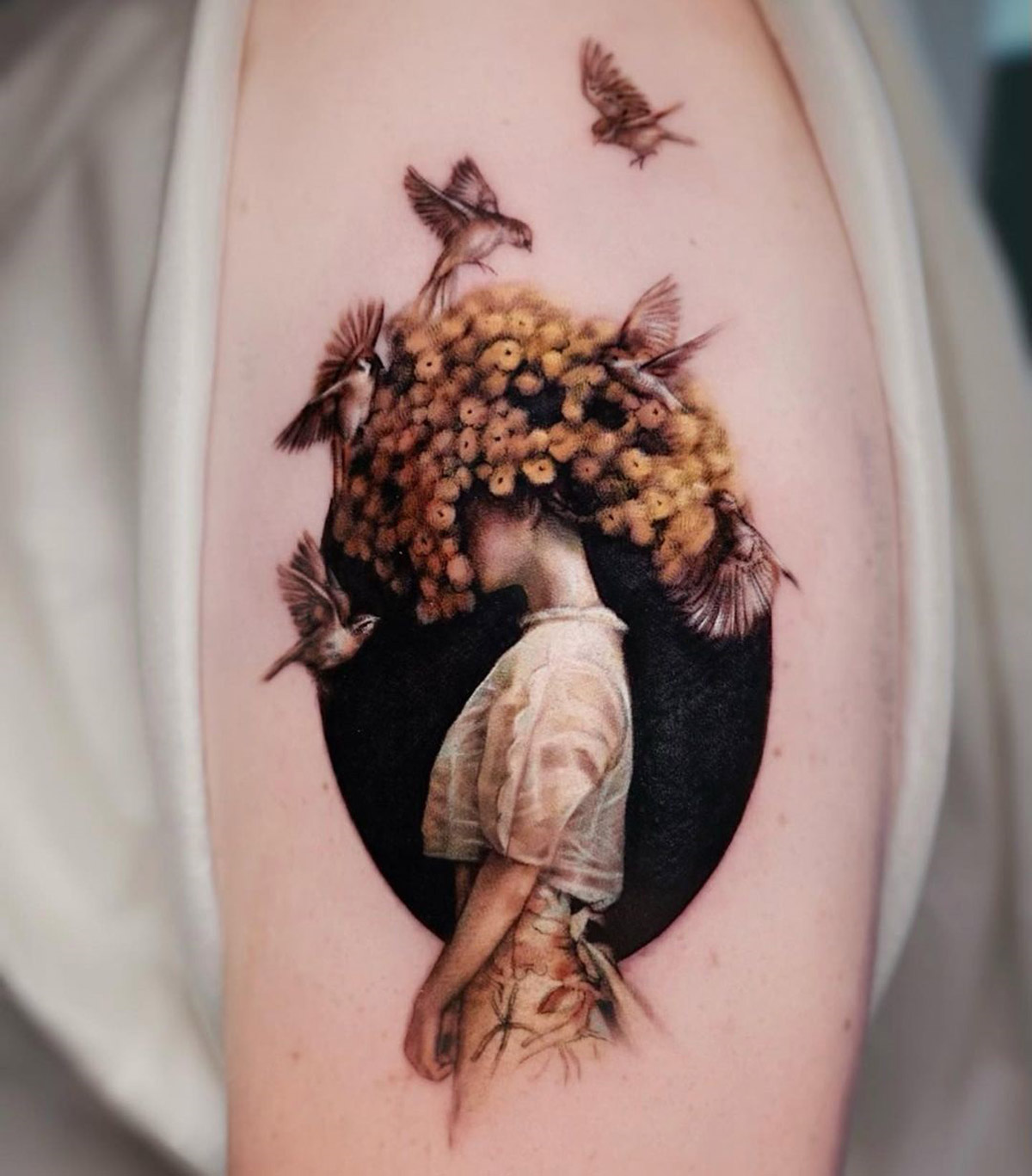
Anatomy of Hope by Sara Qano, an artist at Ink District Amsterdam.
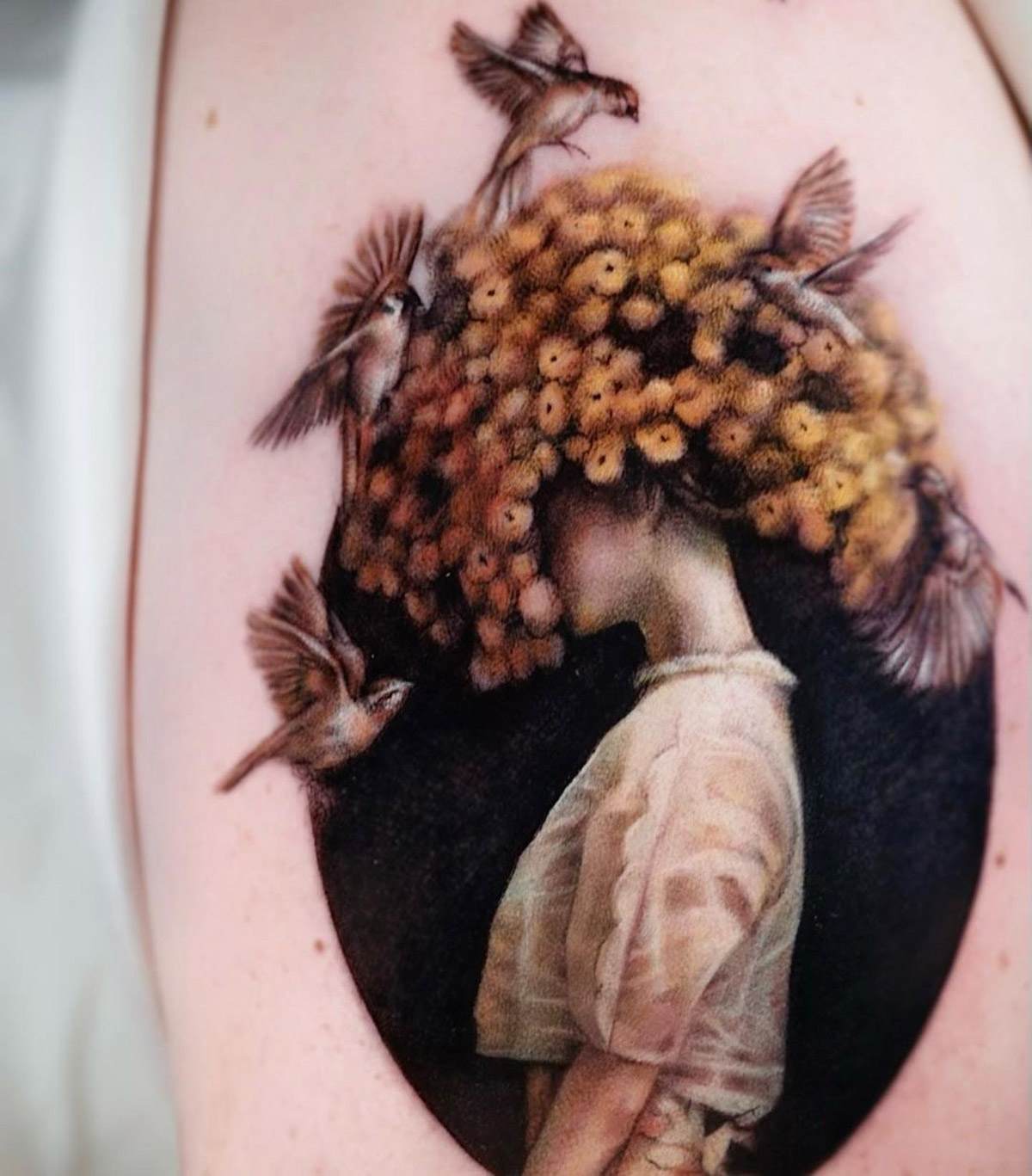

Anatomy of Hope by Sara Qano, an artist at Ink District Amsterdam.

There’s nothing more exciting than a new tattoo. There are so many things to know about the healing process when it comes to taking care of your ink right after you get it to keep it looking healthy and vibrant!
But what about a few years down the line when you start to notice your tattoo looks a little faded and in need of a touch-up, then what? Tattoo fading is natural, but there are things you can do to prevent it from ruining your art.
One of the best ways to help stop our tattoos from fading faster is to know what things cause it to happen in the first place. There are a number of reasons that your ink looks faded.
Here are a few of the culprits that newbies and veteran tattoo clients alike should familiarize themselves with.
Prolonged exposure to the sun can be super harmful to the longevity of your tattoo. Ultraviolet (UV) rays from the sun will penetrate the skin and essentially break down the pigments in the tattoo. Once those pigments are damaged, the tattoo will ultimately appear much lighter and less vibrant than it once did. Sun exposure without any protection like tattoo sunscreen will only make this process happen even faster.
Taking care of your new tattoo is crucial to making sure that it stays happy and healthy over time — antibacterial soap to keep it clean, moisturizer or cream to keep it hydrated (stay away from ointment!), saving the tight clothing for when you’re healed, and fighting the urge to pick off scabs and succumb to scratching are all easy ways to help make sure your tattoo heals properly.
Any damage like infections or ink pulling that happens in those first few weeks and months after new ink will make your tattoo more susceptible to fading over time. You don’t want your tattoo to look faded after a week.
There are a lot of resources available to provide the best care instructions options for your tattoo, and some are confusing. Read our dermatologist-reviewed guide to tattoo aftercare; your ink will thank you in 20 years.
Quality ink and artistry will only benefit you and your tattoo in the long run. Low ink quality ink can affect the longevity of your tattoo, which can lead to faster fading. The FDA doesn’t regulate tattoo ink, so make sure your artist is reputable and delivers high-quality ink. Review opinions from trusted sources on what should — and shouldn’t — be going into your body as your research ink.
If ink isn’t delivered deep enough into the skin, the odds of it fading out faster are a lot higher than if the tattoo is done properly by a professional. This is because tattoo ink is only permanent when placed in the dermis layer of the skin. The cells in the epidermis layer renew too quickly and would result in a tattoo that may only last a few weeks.
The dermis layer cells actually pass the ink particles on to new cells when they die, allowing a long-lasting and permanent tattoo. While getting a low-quality tattoo from your friend might be funny at the time, don’t be surprised if you can’t see it in five years. Long story short, always go to an experienced, professional tattoo artist.
Scrubbing off layers of skin from your tattoo routinely will not keep it looking fresh and can make it fade faster. If you over-cleanse, you are removing the protective layer of skin away too much, which can cause a lot of irritation. Irritation can lead to more damaging effects to tattoos.
This is because when your skin is irritated or wounded, an immune response is often triggered, similar to what happens when you scrape your skin or get a small cut. Cells like macrophages and fibroblasts flood to the site to try and heal whatever is causing harm or irritation. As mentioned before, this causes a cell renewal rate that is too rapid and can potentially be the cause of a faded-looking tattoo.
We know how beautiful and meaningful tattoos can be, so it is key to keep it gentle when cleansing or exfoliating the tattoo area.
Just as we previously mentioned, irritation makes tattoos change more and much faster. Friction is when there is too much rubbing from clothing, rough surfaces, and harsh products. It’s like rubbing off the layer of skin that is protecting your tattoo. Excess friction is especially a concern in the weeks and months after getting fresh ink.
While there is not much to do about this reason, it is important to note that it is a key contributor to tattoo fading. Aging skin changes properties and can lose some elasticity, which can cause the ink in your skin to change and fade.
This is why it is especially important to use tattoo care products that will help the longevity of your ink while keeping the sensitive skin around it happy and healthy. Keep reading to discover exactly how aftercare affects your tattoo.

Right after your tattoo session, it will look really bright and vibrant. After a few days, these effects might start to dim a bit because your skin has started to get used to the ink. It will still look great as long as you take care of it and let it heal properly.
Your tattoo will naturally fade over time. For some people, it can take only a couple of years for them to start to notice that the ink doesn’t look as strong anymore. For others, tattoo fading won’t be noticeable for decades.
If you plan on getting tattoos when you’re young, early 20s-30s, you might not see faded tattoos until you’re well into your 50s! Proper care and upkeep of your ink can help slow this process down pretty significantly, but we aren’t going to lie and say your tattoo will never fade. It is completely natural and normal to see this over time. As for how quickly tattoos fade, there are some factors that can make it worse for some.
Black and grey tattoos tend to last a bit longer than color. They will look more vibrant for a longer amount of time. This is especially true if the color tattoo is light or watercolor. White ink will fade the fastest. While black & grey might look less faded over time, again all tattoos will most likely fade at least a little at some point.
Now that we are familiar with some of the biggest contributors to tattoo aging, we all want to know how to keep our tattoos from fading.
These 12 suggestions are all things that you can use in your day-to-day routine to prevent faster tattoo fading.
A properly healed tattoo is the easiest to maintain. There are a lot of stages to tattoo healing; it takes dedication and patience. But if the tattoo is not properly cared for and healed, the odds that it is going to change and fade much faster are high.
And why not create a great aftercare routine right from the get-go? Taking care of your ink from the beginning will ensure healthy habits and longevity.
Part of this immediate aftercare is resisting the temptation to scratch or pick at scabbing and peeling skin. Yes, this can be a tall order, especially in hot or humid conditions when itchiness and discomfort are at their peak, but remember that scabbing and peeling are part of our body’s natural healing process.
Disrupting it can cause any number of problems, including a distorted image and colors, slower healing, scarring, and in the worst case, infection.
When it comes to choosing the perfect placement of your tattoo, consider areas of your parts of the body that experience the least friction. For example, tattoos on body parts like your palms and feet will likely experience way more friction than a tattoo on the back of your neck.
Shoes and socks can potentially cause fading over time since your feet may constantly have something rubbing against them. Think back to the section on irritation and how it can cause premature tattoo fading.
No, thanks! Think about how often your tattoo will experience friction over time, whether it’s skin-to-skin contact or skin-to-material contact, like the sock example.
We aren’t the first people to tell you that protecting your skin from direct sunlight is really important for the health and youth of it. But we want to emphasize that the sun really does damage your tattoos at all stages of its life, from the healing stage to 30 years later.
Wearing sunscreen at the very least, if you can keep it covered with loose clothes or some form of covering that would be ideal. That can be a big challenge, so do your best to always reapply sunscreen as much as you can! A tattoo-friendly, daily mineral-based SPF made with clean ingredients can truly add years to your tattoo’s vibrance.
Smoking is bad for you. This is not news. But smoking can make your tattoo look really faded and dead as well! If you need any more reason to quit now, here are just a few of the ways that smoking affects your tattoos negatively.
Smoking reduces the collagen production in the body – which is what makes the skin more elastic. If your skin elasticity is reduced, your ink has high chance of bleeding out.
Just as smoking stains the fingers of regular smokers, it can cause discoloration and yellowing of existing work.
As smoke enters your body, it constricts blood vessels and reduces blood flow. This can slow down the healing process, increase the risk of infection, and contribute to scarring.
Hydrated skin has a better chance of staying regular and less irritated. When your skin is well hydrated (and happy), it will look much fresher and less dry and cracked. Using balms and lotions that are unscented and organic and help ensure you aren’t using harsh chemicals that actually dry the skin out.
From fresh ink to older tattoos and general skincare, moisturization is key at every stage. Hydrate your skin with quality, natural ingredients for the best effects while limiting petroleum-based products that can form a waxy layer.
Skin health can be affected by a lot of things — which can impact the appearance of your tattoo over time. Drinking water every day is a great place to start when it comes to skin health.
Plus, it’s just great for your overall health. Exercising and having a balanced diet sounds elementary to say, but it really does make a difference in keeping your skin looking and feeling good!
Tattoo styles, trends, and tastes are ever-evolving — what is old becomes new, and what is new becomes old — it’s the natural cycle of so many art forms. But one thing is for sure, traditional styles always come back into fashion, not just because of the resonance and power of their imagery, but for their literal staying power in your skin.
Consider American traditional and its signature imagery — skulls, anchors, roses, and eagles — characterized by bold black outlines and a restrained color palette. This style’s signature bold black outline sits in the skin prominently, making these tattoos more readable from a distance and, over time, hold stronger. This is the origin of the often-used expression “bold will hold.”
The same is true of the traditional tribal tattoos that fell out of fashion during the early 2000s but have come back in the last few years. These designs are typically applied using exclusively black ink, so they stay strong after years of wear and tear.
Japanese traditional tattooing too is known for its boldness — from smaller hand-poked tebori designs to entire bodysuits done with electric tattoo machines — this style is designed to face the test of time.
Although watercolors with minimal outlines make for a beautiful tattoo on day one, they tend to blur and fade much quicker than these tried and true traditional styles.
In places where the sun only appears for a few short months, it may be tempting to maintain that summer bronze by hitting the tanning beds. The thing is, just like sun exposure, tanning beds expose your skin and tattoos to UV light.
With enough exposure over time, UV rays can cause pigments to fade and design to distort, leaving you with a piece lacking the punch it once had.
If you need more than just skipping out on the tanning bed altogether, there are a few good ways to do it responsibly. If you only have a few tattoos, you may be able to cover them. Otherwise, make sure to apply sunscreen before tanning sessions to reduce potential damage.
Although this is far from a fun fact, pools, hot tubs, and the ocean can cause fading — especially in the early days of a new tattoo. We aren’t asking you to never swim again, but these environments can start the healing process on the wrong foot.
Pools and hot tubs are full of chemicals like chlorine that can cause color distortion, fading, and irritated skin. The saltwater of the ocean can cause many of the same effects as it dries out the skin, prolonging itchiness and scabbing.
In general, excessive moisture can prolong the healing by softening the scabs that form to protect your tattoo. So at the very least, limit or skip out on these activities for the first few weeks of a new tattoo.
Becoming a master in the craft of tattooing takes much more than just being a great illustrator and owning a tattoo gun. The process of apprenticing alone can take anywhere from six months to several years. Becoming one of the most recognized names in the game can take much longer than that.
A true professional has the creativity needed to make beautiful artwork and an understanding of how to properly apply tattoos to the skin to reduce trauma and last through the years.
Remember, a tattoo is meant to last you a lifetime, so spending those extra hours, weeks, or months researching reputable artists will pay off in the long run. Social media and recommendations from friends or even the random person walking down the street whose work looks great are all great sources to help you in the process.

As we’ve made clear, some fading, distortion, and blurring are inevitable in the tattoo aging process. Our skin stretches as we age, and unless you plan to stay indoors for the rest of your life, the effects of the sun will start taking their toll.
Touch-ups can return some of that day-one vibrance to your aging work. It’s important to note that not all artists will feel comfortable doing touch-ups on other artists’ work, so stay in the loop with the artists that have done your work over the years — they’ll most likely love to see how their artwork has aged and rework it to your liking.
If tighter clothing is your thing, that’s great, but when your tattoo is fresh, one of the best things you could do is opt for looser fits. Excessive friction can cause irritation and seriously slow down the healing process.
Sources:
“Bold Will Hold” – An Exhibit of Tattoo Life at Artworks Trenton | Jersey Arts
Tattoo Touch-Ups 101: How to Refresh Old Tattoos | Byrdie
UV Radiation and the Skin | NIH
Why You Shouldn’t Use Vaseline for a New Tattoo | Greatist
[Check Out the List Here]
I love to evolve, to change, I really don’t want to keep doing the same thing over and over.” Silvano Fiato
You can’t spell contemporary without the “Michelangelo” of the genre space.
Silvano Fiato, a photo realism artist, creates tattoos that are completely lifelike, but with an infusion of fantasy. Each piece offers a simulation of dreams or nightmares. Either way, Fiato constantly enraptures you with images of misty, glaring eyes and mystical scenery.

An early prodigy, he began drawing at a young age. He loved the art of tattooing from the start.
“I discovered that what I did with paper and pencil could be reproduced also on skin,” he said. “That was when I decided what I wanted to do in life.”
The founder of Eternal Tattoo Studio got inspired by the ink world from a unique source – his grandfather, who was extremely tattooed. By the time Silvano was 16, he’d already gotten his first tattoo.
But between the love of art itself and the influence of his grandfather, the Italian artist has one other major influence — his country.
“Italy is such a wonderful country, full of art in every corner,” he said in an interview with Skin Artists. “It’s really inspiring for me! I love wandering around and finding art in places you’d never think of. I see art in almost everything in life. When it comes to design a tattoo, to be honest, I always try to follow my customer’s directions and I add my personal representation of what they ask, adding a part of my country, of my culture. But that’s quite spontaneous since it’s part of my cultural heritage.”
The veteran tattoo artist is considered a pioneer in realism. And now, as part of Forbes Top Italian professional of 2023, the world knows it.
“I love black and grey,” Silvano said to Killer Ink. “Because it’s much closer to my idea of a tattoo. Sometimes I love to do something in colour, but I prefer black and grey.”
If you can’t already tell, realism seems to be his go-to.
“[I will] surely stick to realism, my style, because that’s what I always do, since I was a child and I used to draw or paint,” he said. “I won’t hide. I love to experiment, to try new techniques or styles, sometimes just for a day. I love to evolve, to change. I really don’t want to keep doing the same thing over and over.”
While Silvano teaches seminars around the globe, you can harness his skills with Silvano Fiato’s Blackwash Set. a gradient of black inks available as singles or a set. Now you can unlock unlimited shading potential.

To learn more about Silvano Fiato and his studio, click here or follow him on Instagram at @silvanofiato
Interested in booking Silvano Fiato? Visit his website at silvanofiato.com/en/

Script tattoos have become increasingly popular in recent years. These tattoos are unique because they involve words, phrases, or quotes inked on the body. What makes them special is their ability to be fully customized.
People choose script tattoos in Tucson, AZ, to express their feelings, thoughts, or important life mottos. They turn their personal stories and memories into permanent artwork on their skin. This form of tattoo allows an individual to showcase their personality and values in a visible way.
Are you trying to choose the perfect script tattoo design? If so, consider the factors below.
When picking the text for your script tattoo, choosing something that means a lot to you is really important. It could be anything that’s special, like your favorite saying, the name of someone you love, or a big day in your life.
Think about it this way: this text will stay with you forever, so you want to make sure it’s something you’ll always feel connected to and won’t regret having on your skin.
The style of the script you choose for your tattoo plays a significant role in the overall feel of it. For instance, Gothic fonts are bold and can give off a strong, sometimes edgy vibe. They work well if you’re aiming for something that feels powerful or carries a deep, historical feel.
On the other hand, delicate script fonts have a softer, more graceful appearance. They’re perfect for quotes or words that feel personal, sweet, or inspiring.
Before selecting a font, consider the message you want to convey with your script tattoo in Tucson, AZ.
When deciding on a script tattoo, consider how much you want others to see it. Some places on your body are more visible, like your arms or neck. Other spots, like your back or shoulder, can be more private. Where you put your tattoo can make it easy or hard for others to see.
Also, remember that your skin moves and changes. A tattoo might look one way on a flat part of your body but could stretch or look different on a part that moves a lot, like your elbow or knee. Choosing a spot where your tattoo will look great no matter how you move is a good idea.
Adding a personal touch to your script tattoo can make it unique and all about you. Consider including a small symbol that means something special to you, like a heart if you’re talking about love, or maybe a star to represent a dream.
Another cool idea is to mix your words with an image. For example, if your tattoo says something about being strong, you might add a picture of a mountain or a lion to show that strength visually. These small additions can take your script tattoo to the next level and make it one-of-a-kind.
If you’re ready to get a script tattoo in Tucson, AZ, Grape Ape Tattoo is here to help. Contact us today and schedule an appointment!
On Hannah, one of my best customer from the UK… painful session for sure… but No pain, no gain… thank u again…

Have you ever regretted getting a tattoo? Maybe you didn’t like how it looked, or it wasn’t the right design for you. If that’s the case, don’t worry—there are ways to fix up your tattoo.
This quick guide will look at cover-up tattoos: what they are, how they work, and some tips for getting one. So if you’re thinking about covering up an old tattoo, keep reading!
Cover-up tattoos are, quite simply, tattoos designed to cover up other tattoos. You can use them to cover up small mistakes or bad decisions, or you can use them to completely transform an existing tattoo into something new and different.
No matter the reason, they can be a great way to get the tattoo you want without starting from scratch.

When you initially got your tattoo, the artist injected the ink approximately one millimeter beneath your skin into the dermis—a layer below the epidermis. During a cover-up, the artist re-deposits the ink in the same dermis where the previous tattoo’s ink is already visible.
The artist will design a new tattoo that is big enough to cover the old one, and then they’ll carefully place it over the existing tattoo. Sometimes, they may need to remove a piece of the old tattoo before adding the new one.
This artist will often spend quite a bit of time on the design, as there are many factors to consider, such as color, placement, size, and the actual incorporation of the previous tattoo. Therefore, you will often pay more for a cover-up tattoo. However, they are often more affordable than tattoo removals.
Let’s look at each of these factors in more detail.
Color is one of the most important things to consider when covering up a tattoo. The new tattoo must be dark enough to cover the old one completely. Black is often the best color to use, but very dark blues, greens, and browns can also work well.
The artist will often need to add more than one layer of ink, which means the tattoo may take longer to heal. Be patient and wait until it’s completely healed before deciding if you want to add more color.
The new tattoo replaces the old one, so you’ll need to decide where you want it. The old tattoo’s size and shape often determine this. Hence, you may need to remove part of the old tattoo before your artist can place the new one.
The size of the new tattoo is also an essential factor to consider. It must be big enough to cover the old tattoo but not so big that it looks out of proportion on your body.
Sometimes, you may want to incorporate parts of the old tattoo into the new one. This can be a great way to turn a lousy tattoo into something you love. The artist will need to be very skilled to pull this off, so it’s essential to research and find an artist you trust.
While cover-ups and reworked tattoos both involve modifying an existing tattoo, there is a big difference between the two. Cover-ups completely conceal the old tattoo, while reworked tattoos incorporate the entire old tattoo into the new design. Reworked tattoos can also be when you ask an artist to change or redo the color.
Most of the time, the same artist reworks a tattoo while a new tattoo artist does cover-ups.

If you’re considering getting a cover-up tattoo, you should keep a few things in mind.
Like anything else, there are both benefits and drawbacks to getting a cover-up tattoo. Therefore, it’s essential to weigh all the factors before deciding.

Finding a talented tattoo artist is one of the most critical factors in getting a good cover-up tattoo. Unfortunately, this can be tricky, as not all artists are equally skilled at doing cover-ups.
Here are a few tips for finding a good artist for your cover-up:
By following these simple tips, you will find a fantastic tattoo artist in no time.
There are plenty of reasons why someone might want a cover-up tattoo. Maybe you got a tattoo when you were younger, and it’s not something you’re proud of now. Or perhaps you had a change of heart about the design, or the artist didn’t entirely execute it the way you wanted. Whatever the reason, a cover-up can give you a chance to start fresh with a new tattoo.
Another reason to get a cover-up is if your tattoo started fading. That’s because it can be challenging to see a fading tattoo, meaning it might not look how you want it to.

Before you get a cover-up tattoo, you’ll need to develop a new one. This can be tricky, especially if you’re unsure what you want. But it’s essential to take your time and find a design you’re happy with. Once you’ve found a design, show it to your artist and see if they can recreate it.
If you’re not sure what you want, there are a few things you can do to get some inspiration. You can look at tattoo magazines or online galleries or talk to your artist about your ideas.
If you’re not sure what you want your cover-up tattoo to be, here are a few ideas to get you started.
No matter what you choose, make sure you’re happy with it. After all, it will be on your body for a long time.
Be patient while your cover-up tattoo heals, as it can take longer to heal than a regular tattoo. This is because the cover-up is done over an existing tattoo, making your healing process more difficult.
You should follow your artist’s instructions for taking care of your tattoo. It will help it heal properly and prevent any complications.
Some people might experience some itching during the healing process. It’s normal, but resisting the urge to scratch is essential. Scratching can cause the tattoo to become irritated or even infected.
Overall, the healing process will be similar to your previous tattoo. You can find more information in this tattoo aftercare guide: https://thefalltattooing.com/blogs/news/tattoo-aftercare-instructions.
There are a few reasons why you might want to avoid getting a cover-up tattoo.
If you’re not sure if a cover-up is right for you, it’s best to consult with a professional. They’ll be able to help you decide if a cover-up is the best option for your tattoo.
If you’re considering getting a color tattoo, you should know that they can be more difficult to cover up. That’s because the color of your previous tattoo will mix with the new ink to create a new color. Therefore, your artist needs to perfect the color matching to transform your old tattoo into something spectacular. If they don’t, you might have a new tattoo that’s a different color than you wanted.
If you’re not interested in getting a cover-up tattoo, you could always get your tattoo removed. Studios or institutions can do this with lasers, which break up the ink so the body can absorb it.
Laser removal is usually more expensive than getting a cover-up tattoo, but it’s worth it if you’re unhappy with it.
Cover-up tattoos are a great way to fix a mistake, cover up an embarrassing tattoo, or add more meaning to an existing tattoo. But, if you’re thinking of getting a cover-up tattoo, there are some things you need to know first.
Our team at The Fall Tattooing in Vancouver can help you get the perfect design and find a talented artist who will make your new tattoo look amazing. Contact us today for a consultation.
By: Ileana Vizcarrondo
The oldest documentation of tattoos dates back to around 3300 B.C. There were many different ways people would tattoo. The Maoris of New Zealand would take a piece of bone from a shark tooth or stone, carve it to a point and strike it with a mallet to open the skin before applyingpigment to the wounds. Of course, this was and still is, done primarily for ritual purposes. Nevertheless, it truly puts into perspective just how many advancements have been made in how we are able to apply ink to skin. It wasn’t until December of 1981that the first tattoo machine would be patented by Samuel O’Reilly, a New York tattoo artist.

The development of the modern tattoo machine technically began in 1875 when Thomas Edison invented the electric pen. This pen is the first electric motor driven appliance to be produced and sold in the United States. It operates using rotary technology, much like we see in tattoo machines today.
Rotary machines work on a spinning motor that moves the needle up and down. These machines are known to be more quiet and less harsh on the skin than a coil machine which can help the tattoo heal quicker. More and more artists are switching from traditional loud coil machines to rotary machines.
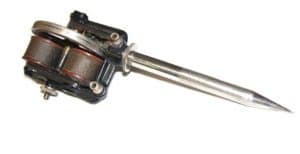
The electric pen was essentially a smaller and messier version of a printer. It is configured by a stylus, cast iron holder, a wet cell battery which was wired to an electric motor mounted at the top of the stylus. The motor was able to rapidly move the stylus back and forth creating punctures into paper at 50 punctures per second. Once the person finishes writing and creates the stencil, ink will be poured over it on a flatbed and pressed with an ink roller to create the copy. The pen, flatbed and ink roller were sold as a set; the most expensive one was $60.
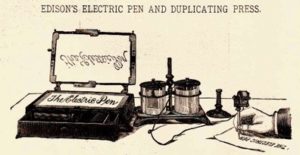
This invention was quickly forgot about and replaced when the typewriter started becoming more accessible to people. In the late 1880’s, Samuel O’Reilly had already been experimenting and modifying different machines to see which would work best for tattooing. His original pre-patent design used a dental plugger but he eventually came across the electric pen fifteen years after its initial invention and made history.

The modifications he made to the electric pen was the inclusion of an ink reservoir at the tip of the barrel and a change from the straight barrel to one with a couple of right-angle bends that moved the motor smoother. He also made it so the needle tube could hold a total of 3 needles. This advancement impacted the tattoo industry heavily and with the Industrial Revolution on the rise, technology advances were at an all-time high as well. Everyone wanted to come up with a way for faster, more efficient tattooing. Not even a month after O’Reilly’s patent, a man named Tom Riley from London patented the first single coil machine which used a modified door bell.
The first tattoo artist to appear on television, George Burchett used Riley’s original coil machine but ended up upgrading the design by including a stop switch and a plug that you can put in the wall instead of relying on batteries.
Eight years later, the first twin coil machine was invented by Alfred Charles South, also from London. He too was inspired by the doorbell so his design included two coils enclosed in a plate steel box. A spring was often attached to take some of the weight off the tattoo artist’s hand.
The twin coil machine is also thought to be inspired by another Edison invention, the telegraph, since it too uses side by side coils to operate. Due to the increasing popularity of this machine, the tattoo kit was officially created which included the machine, ink, needles and a book of designs.
It has been almost 150 years since Edison invented the electric pen, the invention that would, little to his knowledge, change the tattoo industry forever. Today, you can find everything from wireless tattoo machines to tubes that can hold 100+ needles! It is clear that the evolution of ink is still very much in motion and tattooing is more popular now than ever.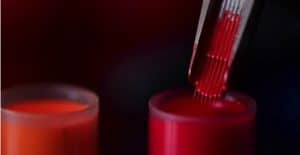
Lately, Guillaume has been working only during guest spots and creating increasingly beautiful tattoos suspended between abstraction and reality. It’s time to learn more about him…
Hi Guillaume, have you always been a tattoo artist or did you find your way through life’s bizarre paths?
I’ve always had a kind of attraction for tattooed people, but it all clicked around the age of 22 or 23, when I was a technician in the entertainment industry. It quickly became an obsession, and I had to accumulate a lot of knowledge on the subject of tattoos.
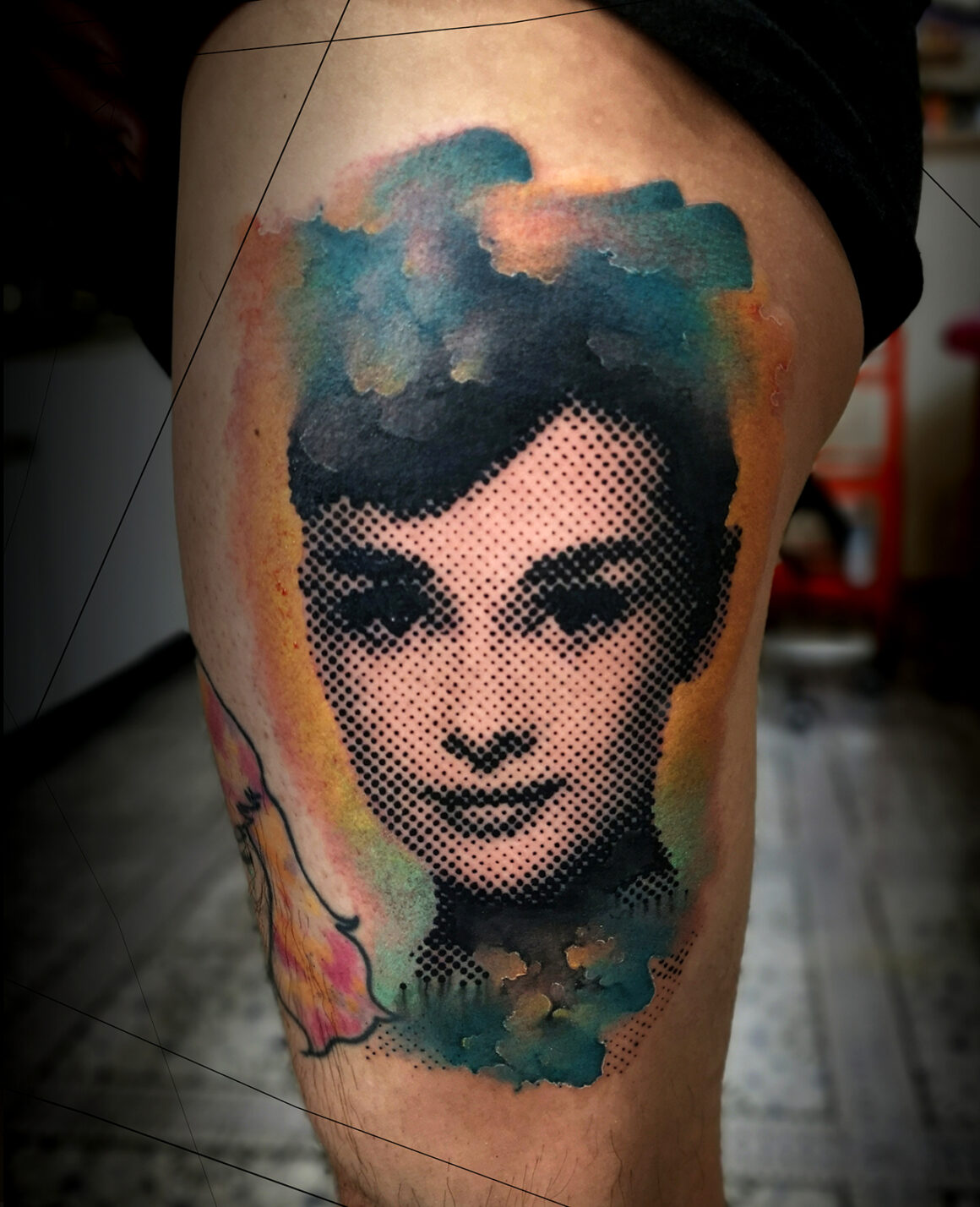
Do you remember exactly how you got started?
At first I was looking for information on techniques, hygiene and the history of tattooing through books and magazines, or by getting tattooed. I started attending conventions, starting with London, to watch the artists I loved, work for days on end, and discuss with them. Later, a few tattoo artists allowed me to observe sessions on a regular basis, which gave me an insight into the human side of the act. It took me 4 years to learn how to draw in a way that was suitable for tattooing, to take my first steps and to start out in a shop as a young tattooist.
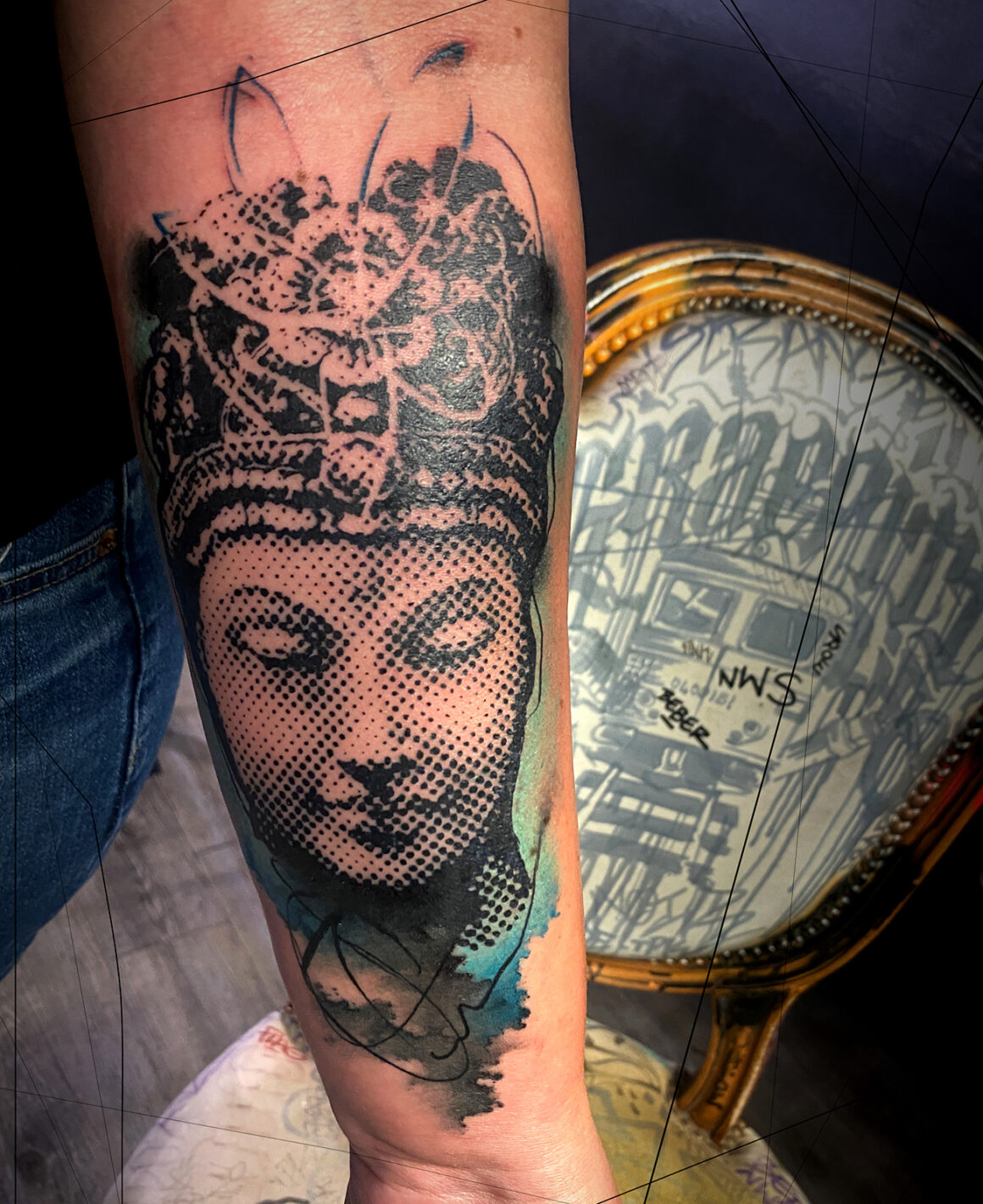
How would you describe your style which is truly unique and very complex?
I’s a game of balance and perceptions between abstraction and reality, revealing itself to the viewer as he or she observes it, with certain details appearing and disappearing depending on the distance from which they are read. It’s also a balance between the hardness of the wefts, which demand rigor and precision, and the softness of the watercolor movement, which develop in a free hand according to the body, the moment and the emotions.
It’s a mix of dualities bordering the paradox in which some people can recognize themselves.
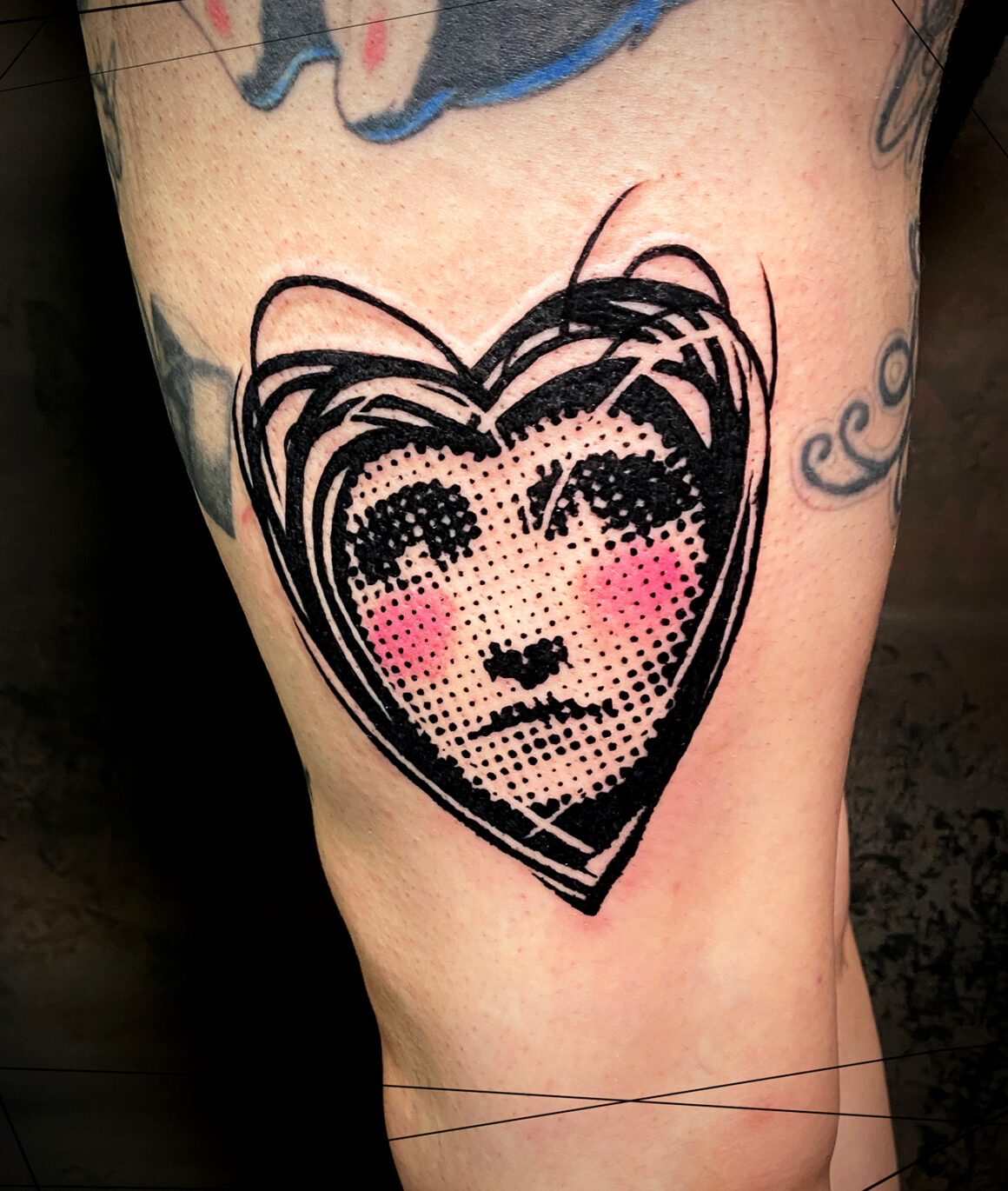
Is the “Smash” you have as part of your stage name also a way of summarizing your art? Like something that catches the eye?
I’d love to tell you that this name is a poetic vision, but it’s not. It’s just the name I had on social networks when I started tattooing. It comes from the name of a team of mates, we lived together and rode everything we could find (BMX, MTB, Snowboard, Wake etc.), it was a real family. Chance had its way.
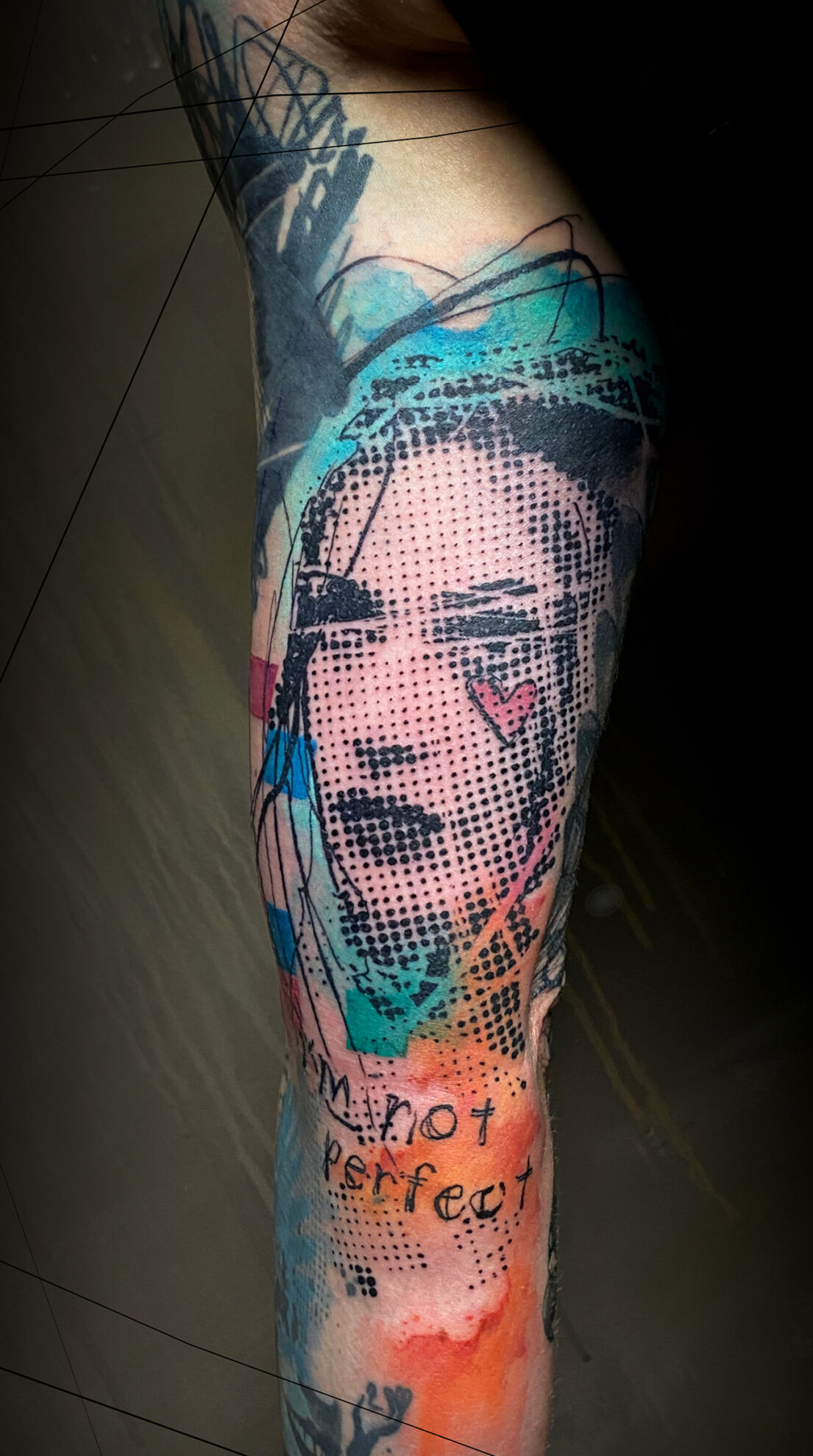
Do you think you’ve had important mentors in the world of tattooing or did it all depend on your eye, your mind and your hands as an artist?
I didn’t have a master of apprenticeship, and I don’t really know if I could have conformed to an apprenticeship anyway (I need to figure things out by myself). For me, Jack Ribeiro (IG: @byjackribeiro) and Ivana Belakova (IG: @ivanatattooart) acted as sporadic mentors, encouraging me to prioritize artistic and personal development.
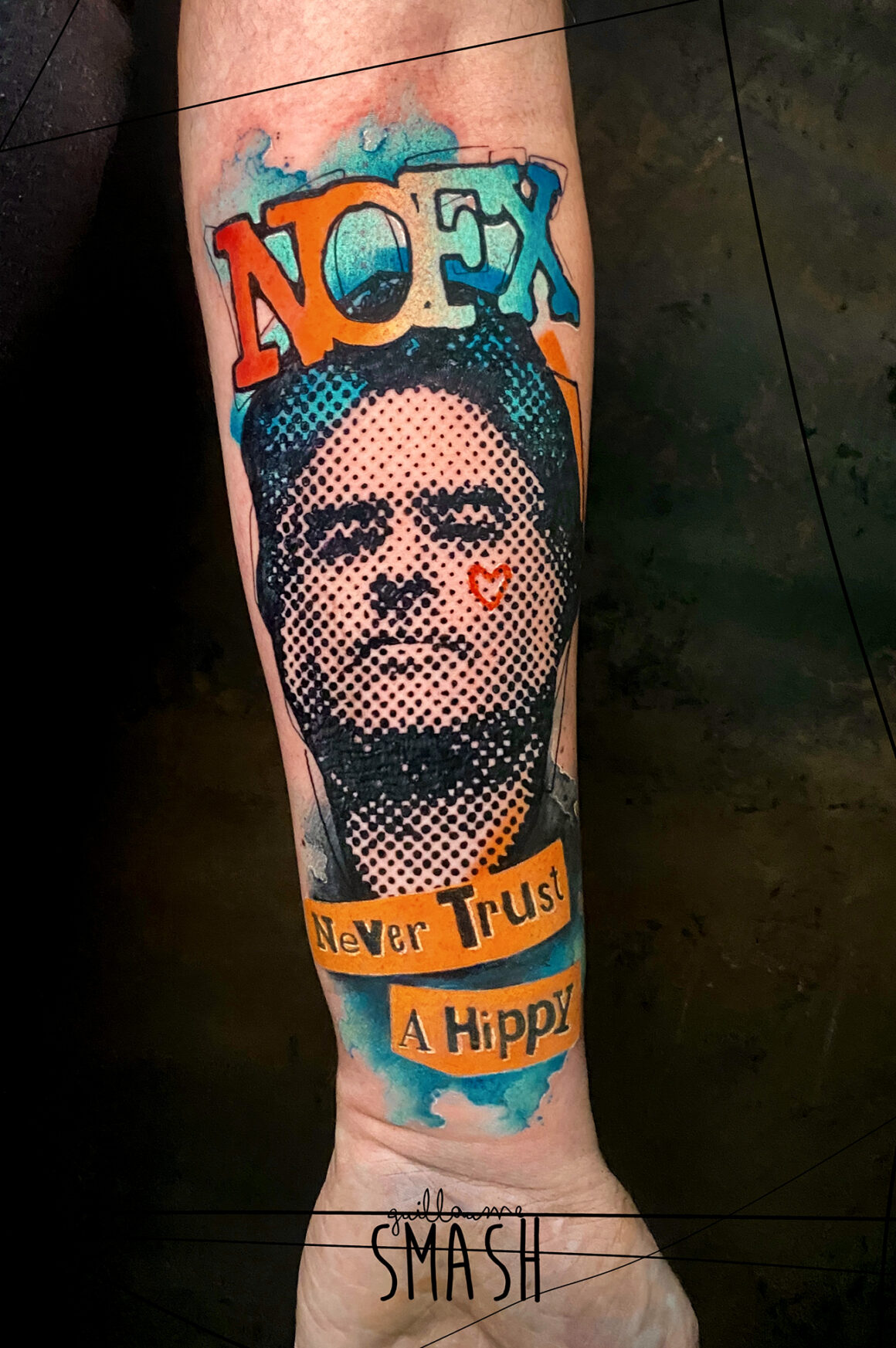
I haven’t thanked them enough for all they’ve given me. I soon teamed up with Emilie (IG: @belzebiche), with whom I later opened «L’Imaginarium», and we worked side by side for several years, our research were both shared and personal. We were both obsessed with tattooing, a lot of discussion, exchanges and trials led us to evolve together quickly.
So many other artists, whether tattoo artists, painters or graphic designers, have influenced my art and my way of seeing without even having met them.
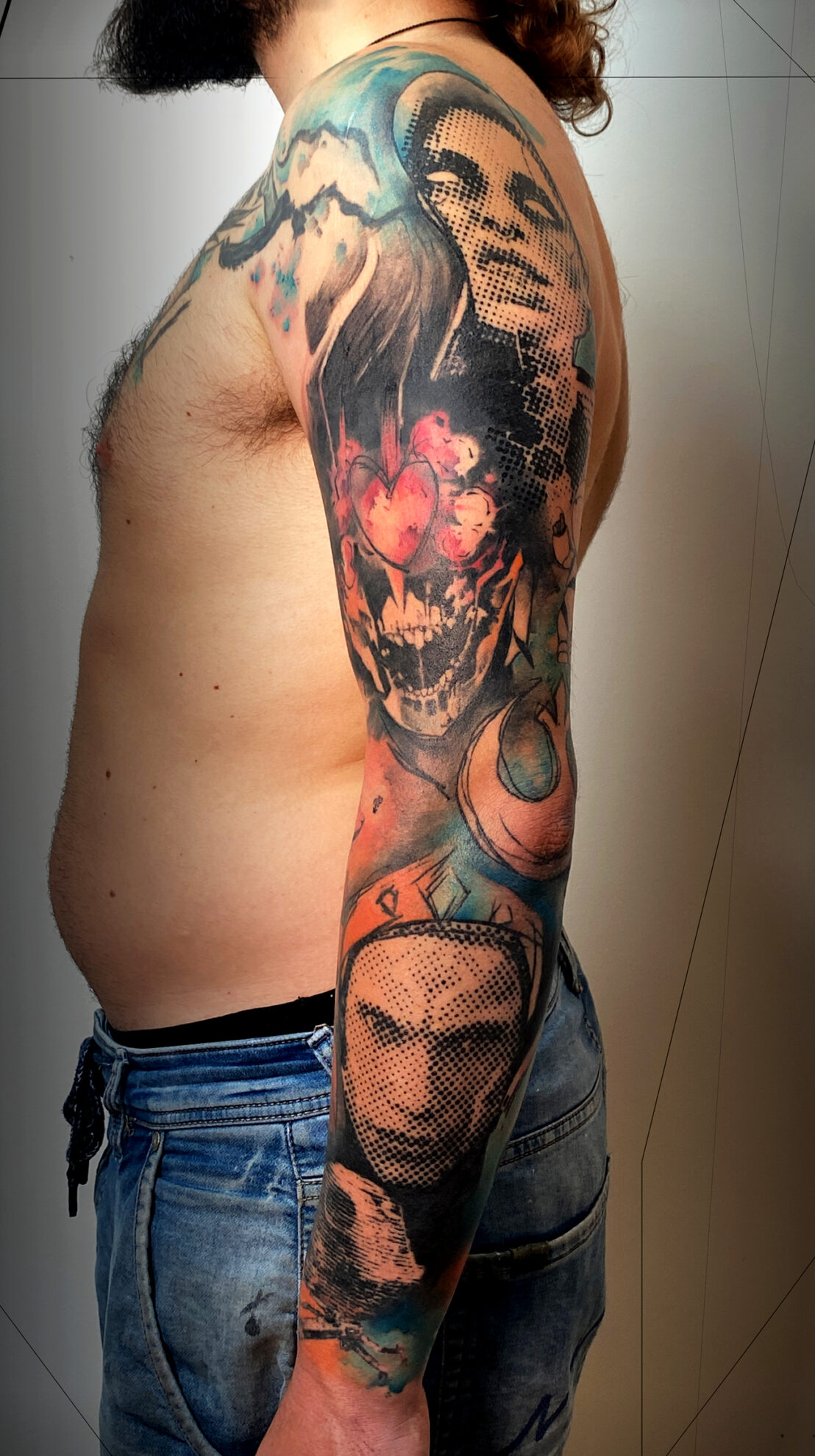
Can you tell me about your current workplace?
I’m working exclusively in guest at the moment, and I always prefer the calm, hushed atmosphere of private studios, where there’s generally less traffic and distractions to devote yourself fully to the moment. I’ll be back on the road after a break, and will share the dates and locations on my networks.
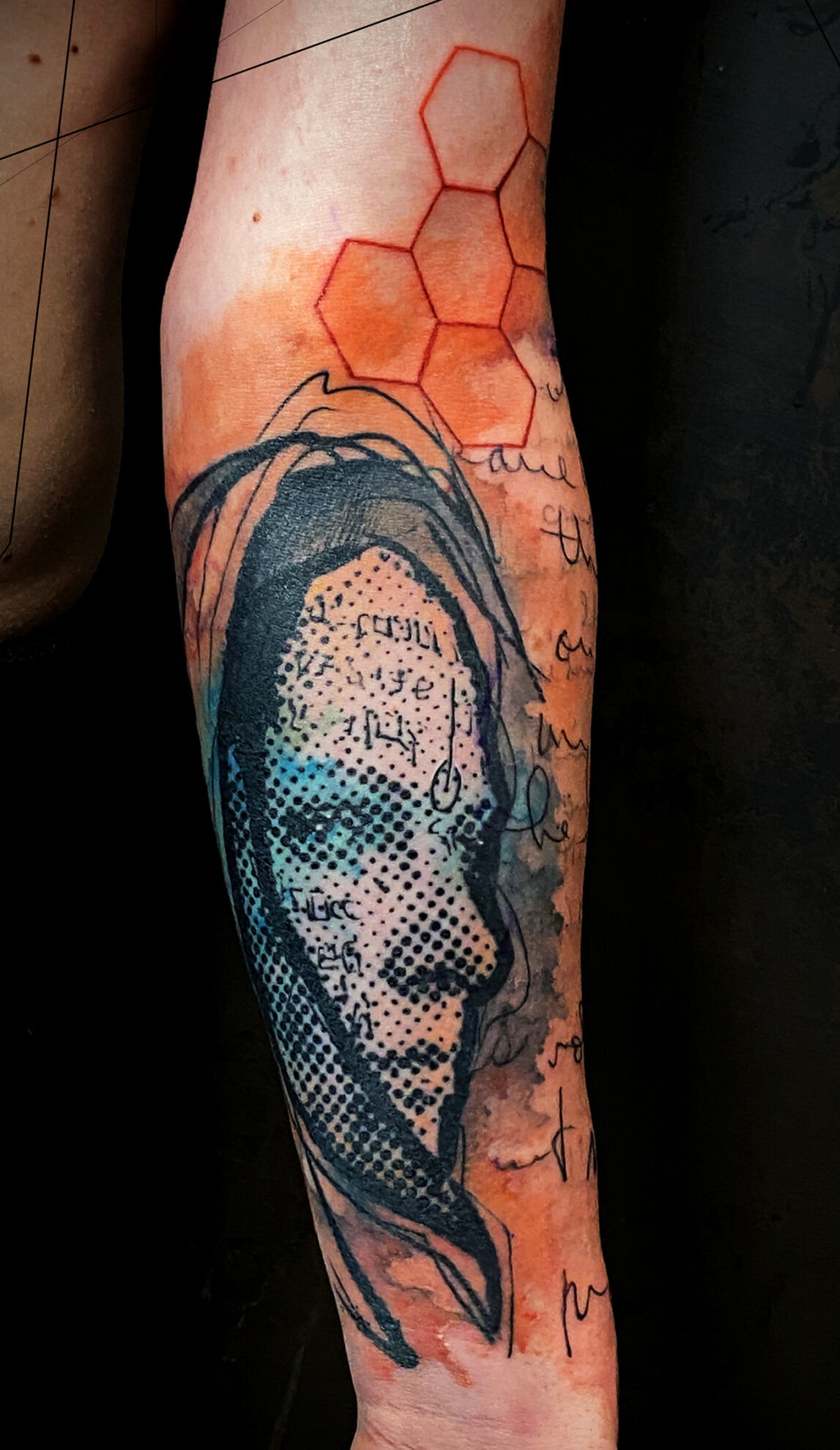
Do you have any tattoo conventions booked for after the summer or can you share where you will be in 2025?
I don’t have any conventions planned at the moment, as I only recently got back on the road, so I haven’t asked myself the question yet. For the moment I prefer to take the time to rediscover tattoo conventions as a visitor.
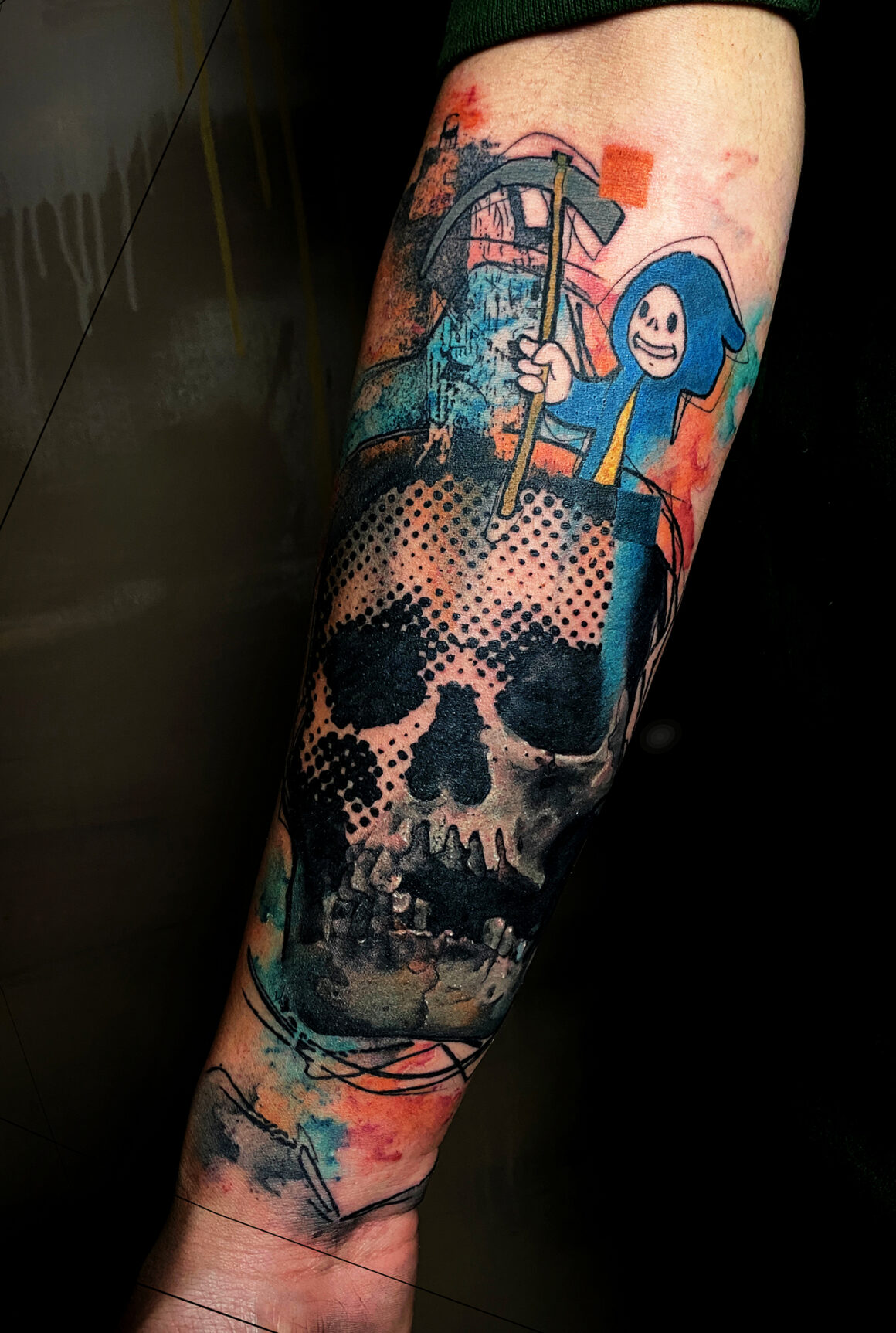
And your last famous words are… ?
As a tattoo artist, try to give back to the tattoo world as much as it gives you.
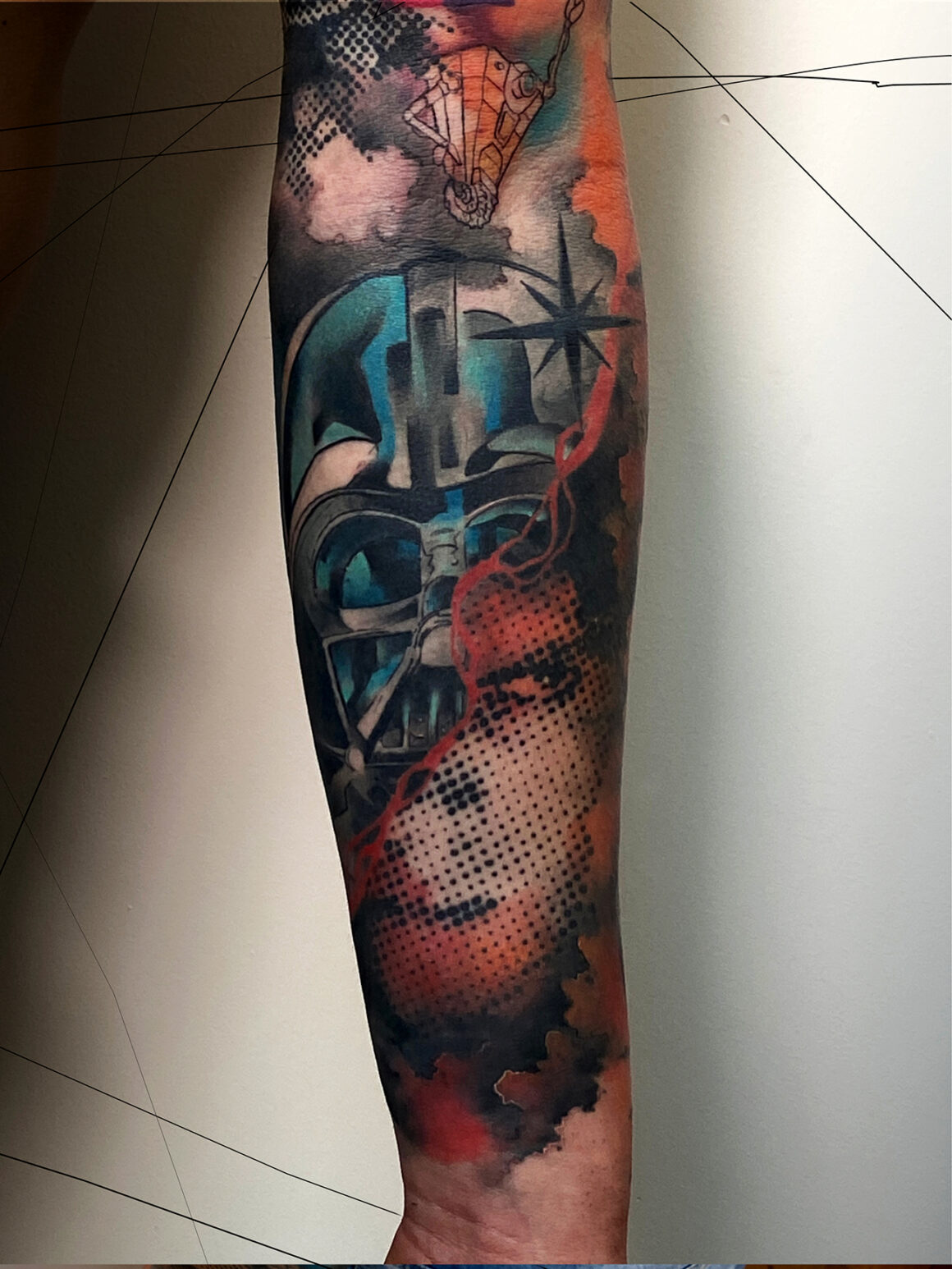
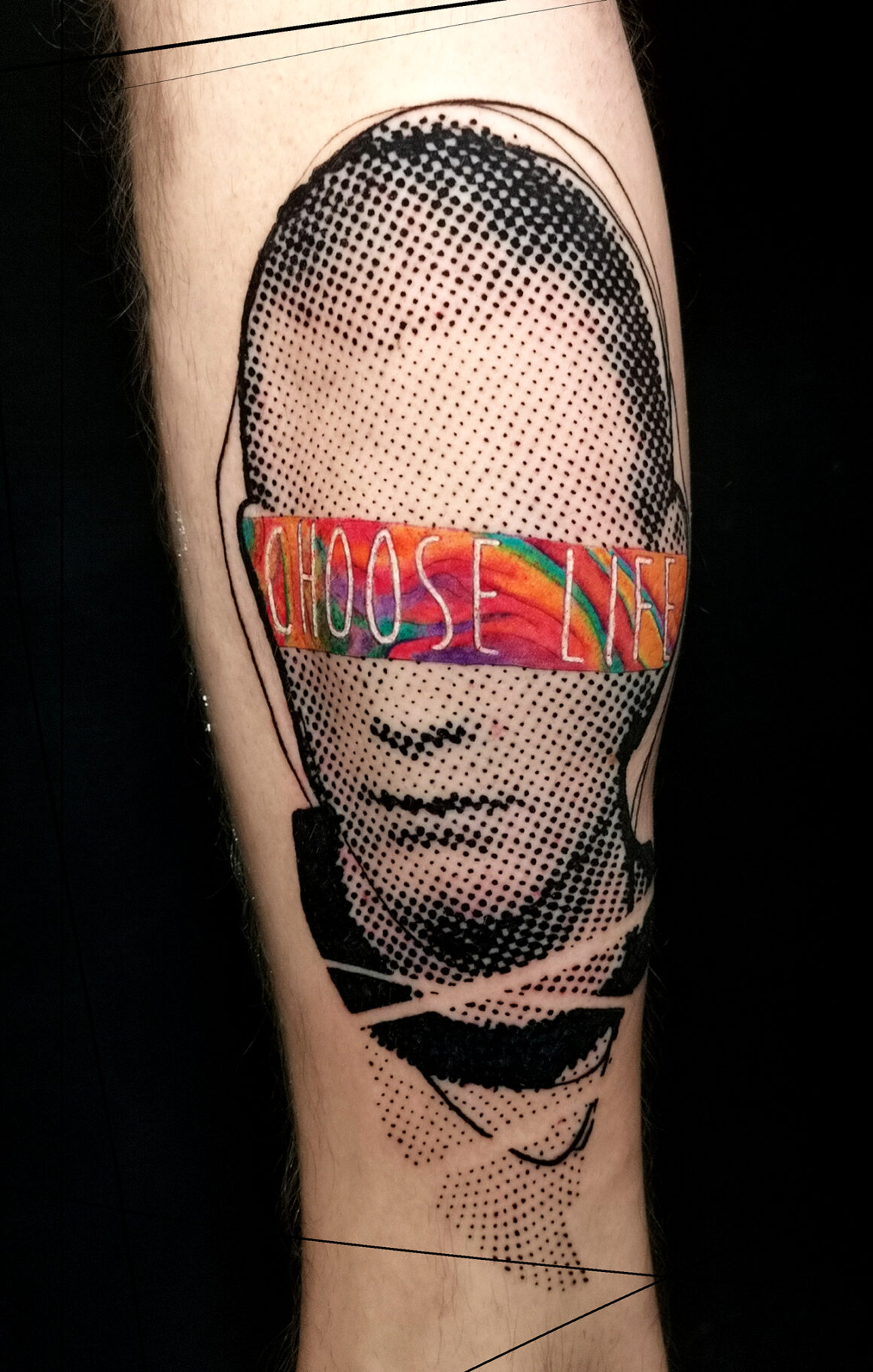
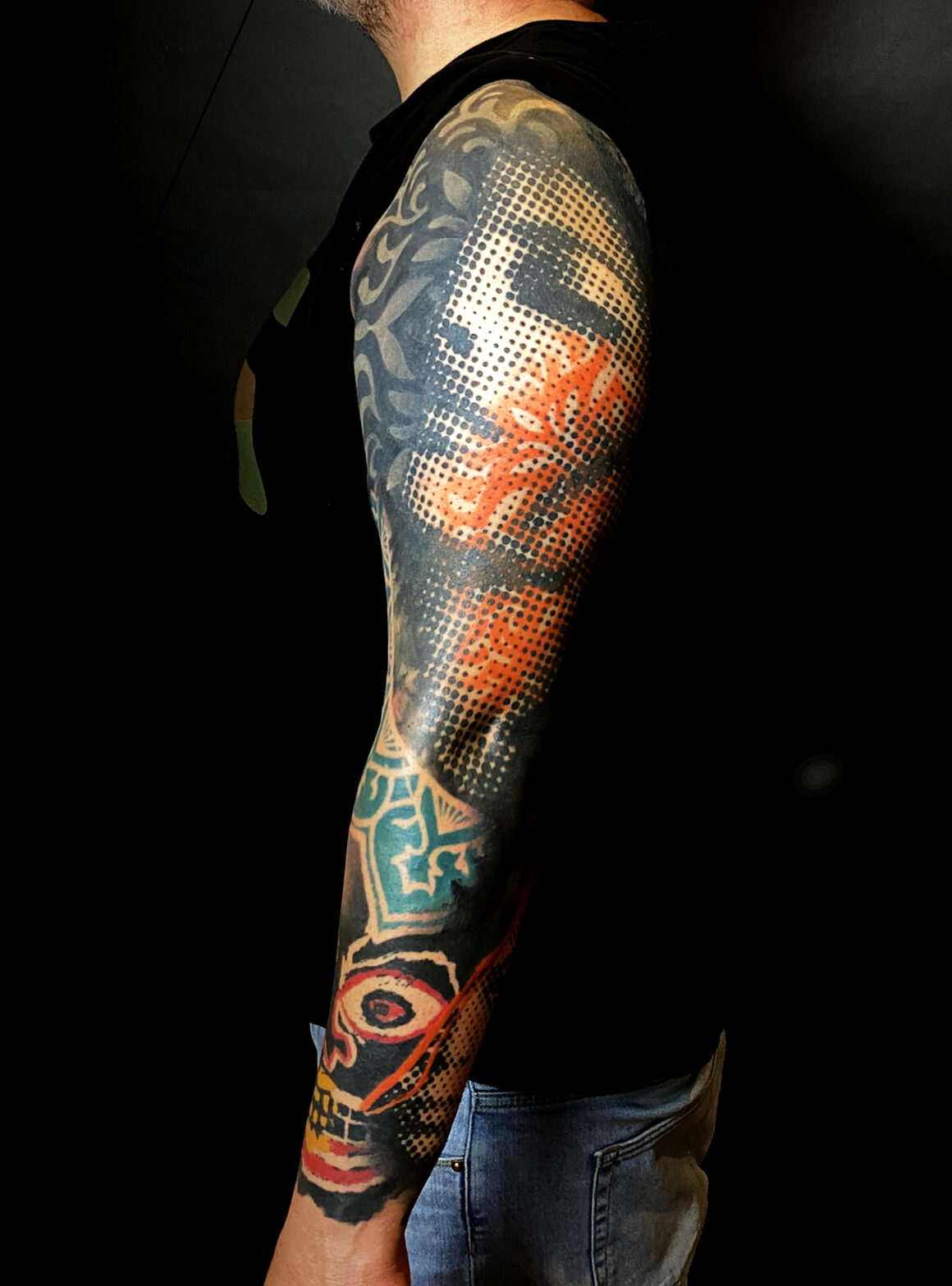
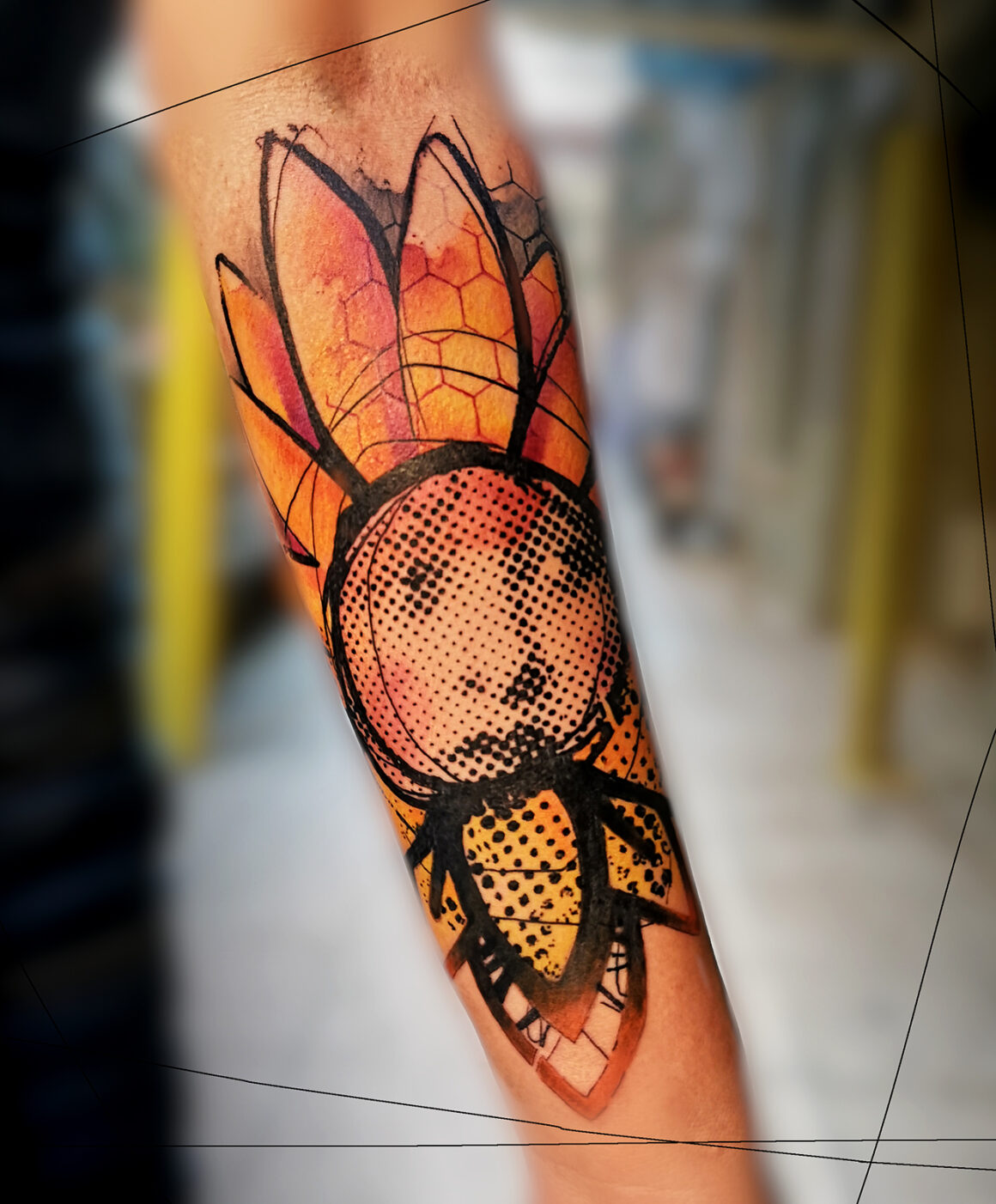

The post Guillaume Smash, simply a game of balance and perceptions appeared first on Tattoo Life.

Artificial Intelligence (AI) is gradually reshaping the tattoo industry, impacting various aspects from design creation to customer engagement and safety. Here are several ways AI is changing the tattoo industry: